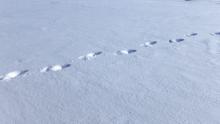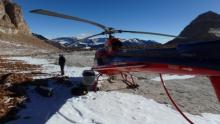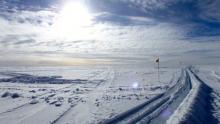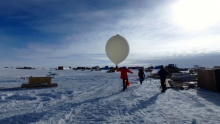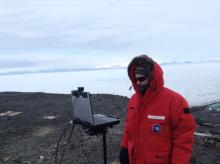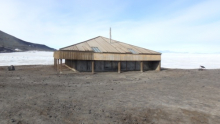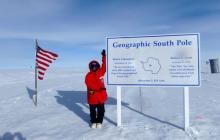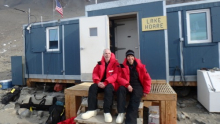Operation IceBridge 2017
What Are They Doing?
 Icebergs the size of a city block in eastern Greenland. Photo by Russell Hood.
Icebergs the size of a city block in eastern Greenland. Photo by Russell Hood.
IceBridge is in its 8th year as a NASA mission and is the largest airborne survey of Earth's polar ice ever conducted. IceBridge uses a highly specialized fleet of research aircraft and the most sophisticated science instruments ever assembled to characterize yearly changes in thickness of sea ice, glaciers, and ice sheets in the Arctic and Antarctic. The research team is experiencing first-hand the excitement of flying a large research aircraft over the Greenland Ice Sheet. While in the air they are recording data on the thickness, depth, and movement of ice features, resulting in an unprecedented three-dimensional view of ice sheets, ice shelves, and sea ice. Operation IceBridge began in 2009 to bridge the gap in data collection after NASA's ICESat satellite stopped functioning and when the ICESat-2 satellite becomes operational , making IceBridge critical for ensuring a continuous series of observations of polar ice. IceBridge flies over the Arctic and Antarctic every year - in the Arctic from March to May and the Antarctic in October and November. By comparing the year-to-year readings of ice thickness and movement both on land and on the sea, scientists can look at the behavior of the rapidly changing features of the polar ice and learn more about the trends that could affect sea-level rise and climate around the globe. Support for a teacher on this project is provided through separate funding to ARCUS through NASA. More information about IceBridge can be found at the NASA project website.

